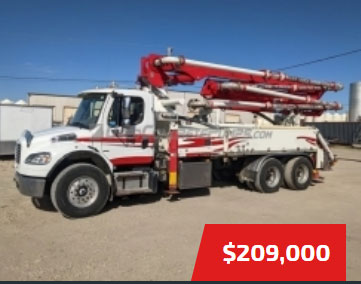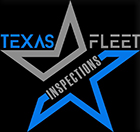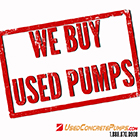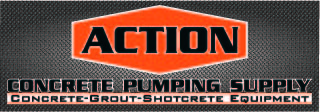| Todd | 04-21-2008 | comment profile send pm notify | ||||||||||
|
Fuel Economy Concrete Boom Pumps Choosing The Right Brand Can Affect Your Bottom Line F Most recently, Schwing America conducted a fuel efficiency test of two popular models of boom pumps, the S 61 SX (61-Meter boom pump) and the 32 XG (32-Meter boom pump). The two tests were conducted near Orlando, Florida on February 18, 2008. The objective was to compare the fuel efficiency of each model versus a competitive brand. Both tests lasted five hours. Since fuel consumption in concrete pumps varies with boom movement and pumping pressure, the units were arranged so the concrete could be pumped from one unit into the other. The booms remained in similar configurations and were not moved during the test. Ready mix concrete was provided by KMR Concrete Inc., Bartow, FL. The 3,000 psi mix design used for both tests included chemical admixtures to delay the setting of the concrete. Test #1 2006 Schwing S 61 SX vs 2007 Competitive 61-Meter The 2006 Schwing S 61 SX was mounted on a 2006 Mack MR 688S with a 427 hp engine. The S 61 SX operates in 7th gear at 1850 maximum rpm. The 2007 competitive 61-Meter was mounted on a 2007 Mack MR 688S with a 460 hp engine that operates in 7th gear at 1760 maximum rpm. The 2006 Schwing S 61 SX and the 2007 competitive 61-Meter were set-up level and all fuel tanks were topped off prior to priming out at 1:40 pm. At the time of the test the S 61 SX had 3614 pump hours and the competitive 61-Meter had 2228 pump hours. Schwing’s hour meter runs whenever the unit’s PTO is engaged whereas the competitive unit’s hour meter only runs while the unit is pumping, which would explain some of the difference in hours for these units. At 1:45 pm the prime was complete and the units began pumping. The S 61 SX was timed between 16 and 17 strokes per minute. The pump on the S 61 SX was the 2525H-6 120/85 MPS, rated at 213 cubic yards per hour, 1169 psi, with 250 mm by 2500 mm material cylinders and up to 22 strokes per minute. The competitive 61-Meter was timed between 24 and 25 strokes per minute. The pump kit on the 61-Meter had 140/80 differential cylinders, and was rated at 210 cubic yards per hour, 1233 psi, with 230 mm by 2100 mm material cylinders and up to 31 strokes per minute. At 5:30 pm the Schwing S 61 SX was operating at 1780 rpm. The operating temperature of the unit was 68̊C, up from 54̊C at the start of the test. Pumping pressure was 68 bar up from 56 bar at the start of the test. Also at 5:30 pm the competitive 61-Meter was operating at 1800 RPM. The operating temperature was 65̊C, up from 55̊C at the start of the pour. At 5:45 pm, both 61s stopped pumping and began their wash out procedure. Given the average strokes of the 61s, it was estimated that they pumped approximately 165 cubic yards per hour, 825 cubic yards total. The fuel test compared competitive 61-Meter and 32-Meter boom pumps. Results Both 61s were driven to the on-site fuel tanks prior to going to the wash bay for further clean up. Total fuel added to the S 61 SX was 41.34 gallons. Total fuel added to the competitive 61-Meter was 52.10 gallons. It was noted the difference in fuel consumption was 26% in favor of the Schwing. Test #2 2004 Schwing 32 XG vs 2006 Competitive 32-Meter The 2004 Schwing 32 XG was mounted on a 2005 Mack MR 688S with a 350 hp engine. The 32 XG operates in 7th gear at 1650 maximum rpm. The 2006 competitive 32-Meter was mounted on a 2006 Mack MR 688S with a 427 hp engine that operates in 9th gear at 1850 maximum rpm. Once Test #1 was underway, the 32 meter concrete pumps, which were already set up level and topped off, were primed out at 2:20 pm. At the time of the test the Schwing 32 XG had 3958 pump hours and the competitive 32-Meter had 2080 pump hours. At 2:25 pm both 32s began pumping and both were timed at approximately 20 strokes per minute. The pump kit on the 2004 Schwing 32 XG was the 1200 125/80 Single Circuit rated at 170 cubic yards per hour, 758 psi, with 230 mm by 2000 mm material cylinders and up to 26 strokes per minute. The pump kit on the 2006 competitive 32-Meter had 140/80 differential cylinders, and was rated at 210 cubic yards per hour, 1233 psi, with 230 mm by 2100 mm material cylinders and up to 31 strokes per minute. At 5:40 pm the Schwing 32 XG was operating at 1650 RPM. The operating temperature of the unit was 70̊C (the operating temp at the start was not noted). Pumping pressure was between 80 and 90 bar. At 5:40 pm the competitive 32-Meter was operating at 1750 RPM. The operating temperature was approximately 70̊C. At 7:20 pm the 32s stopped pumping and began their washout procedure. The concrete temperature was 143̊F. The average strokes of the 32s indicated a rate of approximately 143 cubic yards per hour, 720 cubic yards total. Results Both 32s were also driven to the on-site fuel tanks prior to going to the wash bay for further clean up. The total fuel added to the Schwing 32 XG was 27.76 gallons. The total fuel added to the competitive 32-Meter was 45.34 gallons. It was noted that the difference in fuel consumption was 63% in favor of the Schwing. Industry statistics estimate fuel expense at more than 10% of operating expense for a concrete pump. As this test shows, Schwing’s design, including their Open Loop Hydraulic System, can significantly affect fuel consumption and profitability for owner operators and fleet owners. Pump to pump operation is monitored using Schwing’s Vector Control System which provides valuable two-way communication between pump and operator. TEST #1 - Projected Fuel Savings @ 1,290 hrs/yrS 61 SX 61-Meter Gallons Per Day 41 52 Gallons Per Week 205 260 Gallons Per Month 882 1,118 Gallons Per Year 10,584 13,416 Gallons Saved Per Year (2,832) Annual Savings $9,912 5 Year Savings $49,560 10 Year Savings $99,120 20 Year Savings $198,240 TEST #2 - Projected Fuel Savings @ 1,290 hrs/yr32 XG 32-Meter Gallons Per Day 28 45 Gallons Per Week 140 225 Gallons Per Month 602 968 Gallons Per Year 7,224 11,610 Gallons Saved Per Year (4,386) Annual Savings $15,351 5 Year Savings $ 76,755 10 Year Savings $ 153,510 20 Year Savings $ 307,020 PUMP MORE CONCRETE, BURN LESS FUEL Customers report 30% fuel savings over competitive brands. Visit www.schwing.com for the complete report: Fuel Economy in Concrete Boom Pumps 1-888-SCHWING | www.schwing.comhttp://www.schwing.com/home/Schwing_Fuel_Test.pdf |
||||||||||||
| MB Concrete | 04-21-2008 | reply profile send pm notify | ||||||||||
|
I was told to run my schwing wide open when pumping, it is a 2007 32 XG. Is this true ? |
||||||||||||
| rcv1973 | 04-21-2008 | reply profile send pm notify | ||||||||||
|
All pumps are designed to operate at the maximum rpm as set by the manufacturer. This setting matches the peak engine HP to the rpm the pumps are supposed to run at (usually 2150 rpm). Both of these requirements are maintaned via the ratio of the gearbox. Both the engine and the hydraulic pumps are designed to operate at X rpm running the pumps at an rpm higher or lower than this can and will damage the units. |
||||||||||||
| shrek52z | 04-22-2008 | reply profile send pm notify | ||||||||||
|
art I operate the new schwing 52z my pump has an automatic feul selector in the cab when I engage the PTO it sucks feul from the outrigger therefor I can run offroad diesel. When I disengage the PTO it aotomaticly switches back to the saddle tanks while driving. |
||||||||||||
| Bob | 04-22-2008 | reply profile send pm notify | ||||||||||
|
That is the way it is supposed to be done. When will the rest of the mfg's figure it out? EVER??? |
||||||||||||
| pudg | 04-22-2008 | reply profile send pm notify | ||||||||||
|
read the fuel test by schwing ,let me say i am a schwing man,but it seemed all the competitors pumps had larger engines,doesn't seem like a very fair test,show me same pump size, same engine size, and that would give a fair comparison. |
||||||||||||
| pudg | 04-22-2008 | reply profile send pm notify | ||||||||||
|
Todd was that sarcasm or is Schwing really a sponsor,being I don't see any Schwing adds on this site. |
||||||||||||
| Todd | 04-22-2008 | reply profile send pm notify | ||||||||||
|
No i was not Joking, Schwing runs a large campaign with us almost every year, right now they sponsor 100% of our video site. http://video.concretepumping.com/ its funny that site always does really well, right now 1102 people are watching videos as i am typing. Schwing is still the biggest contributor to my combined web sites. I have 3, ConcretePumping.com, video.concretepumping.com and the photo site, yes they are all linked but they make a great trio.
|
||||||||||||
| Todd | 04-22-2008 | reply profile send pm notify | ||||||||||
|
Here is what i have heard, The PM closed loop system draws more horsepower and therefore burns more fuel. Its not about how much horsepower the truck has, but rather how much horsepower is used to pump the concrete. If anyone else has any results that differ than that please let me know. I wonder if PM any stats? Right now the diesel prices are about $4.40 a gal here in
|
||||||||||||
| concrete animal | 04-22-2008 | reply profile send pm notify | ||||||||||
|
Fuel Consumption: This I couldn't believe. Went out of town for a series of pours. filled up just before I pulled on job Thursday. Pumped apartment slab 6 hours (set up to wash out complete) 140 yards. 3 DAYS consecutively then filled up 29 GALLONS!!!! for 3 140 yard pours totle 18 hours. Less than 2 gls.per hour!! this on older shwing with 275 h.p... Surprised me never checked pumping with no drive time. And yes I run high gear and 1400 rpm to get same pto speed |
||||||||||||
| Todd | 04-23-2008 | reply profile send pm notify | ||||||||||
|
Brundage Bone Independent Fuel Test
Over the last five years we have seen the cost of diesel fuel nearly quadruple in price. This has been compounded with the inability to receive the substantial tax refunds for off road fuel consumption that we were able to receive in the past but are now unable to realize because of changes in the IRS tax laws. Fuel economy in the past had not been of great concern to us but as the cost of fuel has gone from 2.5% of our gross revenues in 2003 to over 10% and rising it has come to the forefront of our endeavor to efficiently operate our business. There has been much conversation over the last six months about better fuel economy of one brand of concrete pump over another. It is no secret that in a documented test published by Schwing that they claim to get as much as 63% better fuel economy than an unnamed competitor. Prior to Schwing publishing the findings of their test on fuel economy we received the test procedures and results. After reviewing the procedure of the test and their findings it caused enough concern within our organization that we determined that we should do our own independent test to determine for ourselves if there is reason to believe that one manufacturer had a concerning fuel economy advantage over the other. The results of this test would determine the direction of our quest to improve fuel economy in general. Currently BBCP operates several hundred Schwing and several hundred Putzmeister concrete pumps so it stands to reason that we would match them against each other for our test.
Finish Pumping (3 ½ hrs.) |
||||||||||||
| Derputzmeister | 04-24-2008 | reply profile send pm notify | ||||||||||
|
I agree with Art on those rpms.....I keep it low and smooth....less fuel consumption, less bounce, less stress on parts, less noise, more time on the clock, smoother pour, nice relaxed pace..... |
||||||||||||
| Bob | 04-25-2008 | reply profile send pm notify | ||||||||||
|
Just looking from a pedestrian standpoint. What the mfg supplies in the way of a power plant is what you get. If brand X has (???) hp engine and brand Y has a (???) hp engine, the hp difference is not the issue; the mfg is the difference.
|
||||||||||||
| cifa | 04-25-2008 | reply profile send pm notify | ||||||||||
|
In response, all realize that engines make power in two ways torque and horsepower. It is imperative that the hydraulic pumps run at a certain rpm as set by the manufacture to ensure the oil exchanges at the proper rate, failure to do so causes damage in many area’s, bottom line. It is the torque that provides the power and the horsepower that delivers the rpm’s. All Concrete Pump manufactures are captured by the truck chassis and engine manufactures and we have to adapt to what is available. Over the years we have taken the Tim the Tool Man approach “More Powerâ€. Now we re-think this as we go from muscle to efficiency. Sound familiar? Remember the 454-V-8 to a 4 cylinder, just the thought would make any guy sick, for us that would never be caught in a 4 banger, we now all have them. Manufactures need to hear from all, as to what is wanted/needed and not to produce products that do not meet the market needs. I think of all the owners of pumps that have units that never or rarely pump over 100 cubic yards an hour but yet they must have a machine that does 200 + yards per hour. (tim the tool-man) Except on large commercial projects how many of you can depend on the ready-mix supplier to give you more then 100 cy’s per hour or how many placement crews can handle that ( I know there are always hero’s) Does it make sense ??? I now often hear about how an old 275 hp truck in the fleet that gets great fuel efficiency and pumps just fine, It’s the workhorse, but just a few short months ago, a 275 hp truck, no way not me, not enough power to get down the highway. Also during those days of when a 275 hp engine was used anyone remember a concrete sales quote from a ready mix company 3000 psi mix and a 3000 psi “pump-able†mix. So where do we go from here ??? We all build/built muscle machines and said it will pump any thing, no need for the two different mixes. (tim the tool man). Typical concrete mixes are designed 1st to meet a minimum water/cement ratios to achieve strength psi of a specification written by a PE, Ready Mix producers design and adjust the mix matrix to make the best economy for themselves while meeting the required spec, these adjustments in the balance delta to make 27 cubic feet of material (1 cubic yard) allows them to add items like admixtures the make air ( 6% air - that’s right its air space taking up 6% percent of 27 cubic feet of total material in the mix ) / water reducers (reduce your water/reduce your cement need) and other chemicals and adjust the coarse and fine aggregate amounts to make the best economy. It’s simply a task make a mix that will finish and meet the strength and durability requirement at the least expense and not a penny more. For any of you that are in the ready mix business you know what a true cut throat business it is, a simple nickel a yard can lose you the job, all talk service but have to sell on price. If the placement contractor requires a mix that will do other things, setup quicker – retard- flow- higher durability - or pump better (less stress, less hp, better fuel economy) they can do that, but at an extra cost to them and we all know how that goes. Could/would/should the billing rate of a 36 or whatever meter with muscle head power and a high output 200 cy per hour or more bill higher then a 36 meter with lesser output, why not there are operational costs differences. As shown in this recent published test their are smaller pump cells that can be used on most pumps and are available from most manufactures who design and build their own products and they require less engine power, hence better fuel efficiency (454 vs. 4 banger). So when you make comparisons make it apples to apples, don’t compare like “looking†machines but have different years or mechanical characteristics. I think we called this snake oil salesmanship or smoke and mirrors. You can’t always burn rubber with these smaller pump cell machines, but you will get there. In many countries you will find booms that output of 120cy’s is not uncommon and seem to work just fine. No I am not saying this may be the right direction for some or the big booms, but again we all see a lot of 40 meters and under that never or rarely see half of their output potential. It’s like this; You can rent the same car in a standard model and a GT model, both still the same basic car and will get you from point A to B, you voluntary opted to pay more but you knew the laws/limits for speed and safety, so the GT is 95% all show and limited on the available of it’s true potential go……… it may be built on the same basic platform but totally different in mechanical, performance and operating costs. For most this industry is a rental business, choices to your operational costs are openly made on your call , Testing and looking for better ways is a very good thing, and it great this is being done as we all need to do so, we can test – test and retest and all get different results to present as their are many variables to consider. Be sure to read all test data carefully and fully understand what you are comparing and ask questions to the tester on how it was done and any possible things that you may not understand and ask if there was an independent certifying agency on record as witness to the test. Bob Miller CIFA USA, Inc.
|
||||||||||||
| Bob | 04-25-2008 | reply profile send pm notify | ||||||||||
|
I like the idea of working a machine at 50% of capacity. If the valve only shifts 10 to 15 times per min the wear parts are going to last a long time ($$$) When you run ANYONES pump at 100% it is a heat generator - at 50% it is a sweetheart. All that heat is wasted energy ($$$) And when it is time to kick ass you need the capability. When you pump concrete, you are burning up more than just fuel. Give me a big pumpcell every time. ;~) |
||||||||||||
| Vasa | 04-26-2008 | reply profile send pm notify | ||||||||||
|
Bob I agree with You ! I have a Schwing 2525 longrock and it pumps much smoother and less boombounce.... When it was new I was told that i should run it at full rpm (1650 rpm) (VOLVO D12 420 hp 2000 n/m) for the oilflow.... But I reduced the rpm down to arond 1000-1100 rpm and on a 8 hour pour it went from about 2/3 tank of diesel to 1/3 tank (300 liter tank) saved about 80-100 liter in 8 hour ! and we dont see some damage of the hydraulicpumps... The last oilsample didnt show some strange particels in the oil....And I have run it so for 6 year now...many liter of diesel has been saved ! Many dollars has been saved ! Probably have We saved more than what a couple of hydraulicpumps cost to change.... |
||||||||||||
| Bob | 04-26-2008 | reply profile send pm notify | ||||||||||
|
The older "single circuit" machines needed to run at the mfg' suggested RPM. If you slowed the engine down they had too much of a lazy shift - or not complete shift. Todays machines all have an accumulator circuit of some sort and perform very well at below the suggested RPM levels. The boom pumps (hyd) seem to be sized to operate well at lower RPM as well. As far as I am concerned, Vasa, you have the right idea. ;~) |
||||||||||||
| Bob | 04-26-2008 | reply profile send pm notify | ||||||||||
|
The test that I want to see is as follows: pump #1 = Big 300yph kick ass pump cell and 400 or 450 HP engine pump #2 = Small, candy ass pump cell and economy sized engine Pump from one to the other @ 100yph(3) Who uses more fuel? Who wears out the valve and wear plates Which pump is the real winner. I ask this because I do not know; but I expect the big pump cell to win the day. |
||||||||||||
| bisley57 | 04-26-2008 | reply profile send pm notify | ||||||||||
|
Oh Bob,you and Many know more than anyone else,it ain't the caliber......it's the placement that counts.......... |
||||||||||||
| Bob | 04-26-2008 | reply profile send pm notify | ||||||||||
|
Biz, I am an EFP
Earth First Pumper open loop rules!!! |
||||||||||||
| Many | 04-26-2008 | reply profile send pm notify | ||||||||||
|
Bob,did I hear my name mentioned.But I didn't do anything!!!. I personally like the 350 engine but prefer a 13 spd to the 9 spd.This allows for better highway driving in mountains.I would be inclined to say up to a 42m,weight compareable. 60 to 80 yds an hour is like rocking chair pumping,loved it.Less mental fatiuge and less time in shop. Mr Miller made some very agressive statements which makes good sense.The one point that comes to my mind is this is a on/off road piece of equipment.With today's speed limits (some 75 mph) it needs to have the ability to at least get close. An observation of sorts: The OTR trucks have found higher horsepower engines and the use of low profile tires increased the fuel mileage (go figure). All Concrete Pump manufactures are captured by the truck chassis and engine manufactures and we have to adapt to what is available. Perhaps it's time for the manufactures to tell the factories it just ain't good enough fellows.But then I hated castor oil. Back to nap time. |
||||||||||||
| thinsplash | 04-28-2008 | reply profile send pm notify | ||||||||||
|
art and bob you can get fined for running dye fuel in the outrigger tank on the job. the return line goes to the saddle tank and the dye will stay there for months. schwing has been doing the fuel valve for years since the first 52m in the us. |
||||||||||||
| Bob | 04-28-2008 | reply profile send pm notify | ||||||||||
|
You have lost me (easy to do) Are you saying that when the Schwing is pulling fuel from the outrigger tank that it is dumping return fuel into the saddle tank........ or........... that if you put OFF ROAD fuel in anyone elses outrigger tank that it would return to the saddle tank??????? I know the answer to the last question, but not the first. Can you put off road fuel into a Schwing outrigger tank and have it return to the outrigger tank?
|
||||||||||||
| thinsplash | 04-28-2008 | reply profile send pm notify | ||||||||||
|
we have had both situations return line going to saddle tank and return line to outrigger tank. the main problem comes from when you switch tanks there is still dye fuel in the lines. so if return lines go to both tanks ie when on outrigger return to outrigger then on saddle return to saddle the extra dye in the lines and in the motor will return to the saddle tank. the dye stays in there for a long time to catch people that run dye fuel once in a while to cheat the system. |
||||||||||||
| Bob | 04-28-2008 | reply profile send pm notify | ||||||||||
|
Splash, Thanks for the answer. ;~) I was hoping that someone had isolated the two fuel systems; feed, return, filtration, the works. The idea that the residual 'red' fuel would return to the saddle tanks upon returning to the truck supply pretty much negates that program. Thanks again |
||||||||||||
| thinsplash | 04-28-2008 | reply profile send pm notify | ||||||||||
|
no problem we tried to figure a way of doing it years ago. the only way is the old 2 engine approach. but we all know how that was. tow the pump to the job pump the job and tow it home sometimes. |
||||||||||||
| Bob | 04-28-2008 | reply profile send pm notify | ||||||||||
|
I REALLY HATE TO WRITE THIS!!!!!! That makes the Putz trailer a more viable program |
||||||||||||
| 38zman | 04-29-2008 | reply profile send pm notify | ||||||||||
|
Here in Ontario Canada no plates/tags required no circle check required every company runs there pumps on died diesel if the scale is open we dont even have to drive through it if we dont want to. There are no road restriction in fact there are no rules for concrete pumps I have spoken a few times to the MTO here and concrete pumps are refered to as road building equipment.... figure that but The only thing that governs pumps here is the ACPA. and only about 60 % of the companies are members So yes fuel is expensive died or clear I can pump all day and travel around 150 km in any direction and my average fuel use is about 160 litres and in a average day my stroke time is normally around 2 hrs. It seems I spend more time waiting for concrete than pumping it. Oh the last thing with the toll highway that runs east and west through the GTA no plates no charge :o) Ontario has it easy other provinces well some are so harsh you cant even carry water in your tank because you are over weight. |
||||||||||||
| Johny | 04-29-2008 | reply profile send pm notify | ||||||||||
|
Gravity feed from a tank into a highway vehicle is illegal DOT wise, unless an approved "normally closed" fuel solenoid is included. However, valving is not that big a challenge should the outrigger itself not be fully tested/ approved for its usage in either the USA or Canada. I'd be more interested to know how new product (broken record right?) chalks up when compaired to pre 2007 dirty trucks. (did I just hear soulful whispers of "Mack / Cat" ?) I suspect Cummins will keep more operators from experiencing the most extreme of fuel saving situations which is that which takes place when you've achieved a level 4 derate when "regeneration" won't take place and you get towed and parked for some R&D time at the local dealership. Rumour has it that all such visits are "One Week" minimum. This would be a good time for some hard clear data to surface in order to substantiate those infrequent stories of MRU's mated with MP engines that actually run dependably enough you don't have to stay prepared for that looming boom party.
|
||||||||||||
| Justapumper | 04-30-2008 | reply profile send pm notify | ||||||||||
|
Well the only way I could see the outrigger tank being easier to use notaxable. Is to use an electric pump with its own return line, teed at the throttle body. It would also need its own filter system but, if it had only a primary and, one secondary filter that would be fine for its intended prupose. That way there wouldnt be enough dyed fuel to really contaminate the hwy tank. I love the fule test though. And I agree with most of the operators that running the RPMs as needed for each job is how it is supposed to be. I rarely run flat out on my machine and, have had no problems with it tearing up the hydralic system. I operate a 94" Schwing 32M 1200 and if anything it is better at low revs compared to high. The only major thing I have had to have replaced is the seal on one of the pumps, otherwise my pump has been a champ. But then again this pump is 14 years old so, you kind of expect something to wear out eventually. |
||||||||||||
| mack2200 | 05-01-2008 | reply profile send pm notify | ||||||||||
|
Did anyone from the Brundage Bone team pull the information off of the Mack engine software and compare that to their findings? When you fill a multi-tank unit with fuel, it takes time for the tanks to stabilize. If you don't wait for this to happen, you might think your tank is full and it really isn't. This could easily change your numbers on how much fuel a concrete pump uses. Just a thought for those performing these tests. |
||||||||||||





















.jpg)
.gif)

.jpg)









.jpg)








